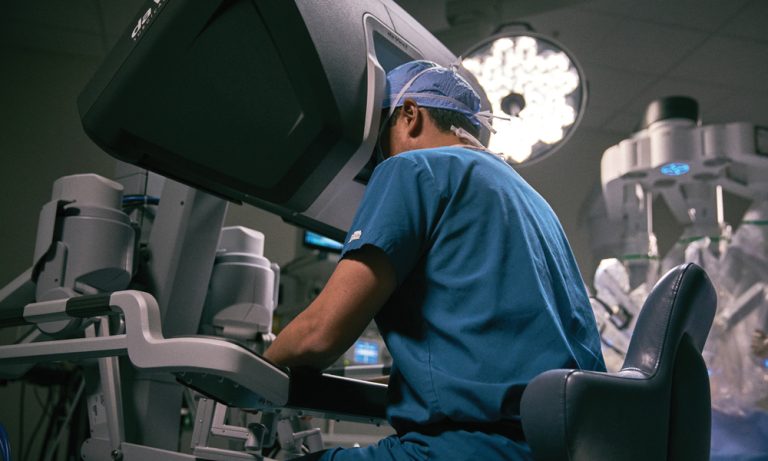In recent years, the healthcare field has witnessed remarkable advancements in surgical technology, particularly with the introduction of robotic-assisted surgery. This innovative approach has revolutionized how surgeries are performed in hospitals dedicated to robotic-assisted procedures, offering numerous benefits for patients and healthcare professionals. This article will explore the transformative impact of robotic assisted surgery in hospitals.
Enhanced Precision and Accuracy
Robot-assisted surgery brings unparalleled precision and accuracy to the operating room. With the use of robotic systems, surgeons can perform complex procedures with greater control and dexterity. The robotic arms used in these surgeries can make minute movements that human hands alone cannot achieve, leading to improved surgical outcomes. Surgeons can navigate intricate anatomical structures with enhanced precision, minimizing the risk of damage to surrounding tissues and organs. This level of accuracy translates into reduced postoperative complications and faster patient recovery times.
Minimally Invasive Approach
One of the key advantages of robotic-assisted surgery is its ability to facilitate minimally invasive procedures. Traditionally, open surgeries required large incisions, resulting in longer hospital stays, increased pain, and higher risks of infection. Robot-guided surgery, on the other hand, employs smaller incisions, often just a few centimeters in size. Robotic instruments and cameras can be inserted through these tiny openings, providing surgeons with a magnified, high-definition view of the surgical site. This minimally invasive approach reduces scarring, less blood loss, and faster patient recovery.
Surgeon Ergonomics and Comfort
Performing surgeries can be physically demanding for surgeons, often requiring them to maintain uncomfortable positions for extended periods. Robot-guided surgery alleviates this challenge by offering improved ergonomics and comfort for the operating surgeon. Instead of standing or leaning over the patient, surgeons can sit at a console, operating the robotic system with precise hand and foot controls. This ergonomic setup reduces fatigue and allows surgeons to perform lengthy, intricate procedures more easily. By enhancing the surgeon’s comfort, robot-assisted surgery promotes better surgical outcomes and reduces the risk of surgical errors.
Expanded Surgical Capabilities
Robotic surgery has expanded the range of procedures that can be performed using minimally invasive techniques. While initially introduced for urological and gynecological surgeries, robotic systems are now utilized in various fields, including cardiothoracic, gastrointestinal, and orthopedic surgery. The versatility of robotic platforms enables surgeons to access and treat anatomical sites that were once considered challenging to reach using traditional methods. This expanded capability has opened new possibilities for treating complex conditions, ultimately improving patient care and expanding the horizons of modern hospitals.
Training and Skill Development
Another significant advantage of robotic-assisted surgery is its opportunity for training and skill development among surgeons. Robotic systems incorporate advanced technologies, such as virtual reality and haptic feedback, which enable surgeons to simulate procedures and practice their skills in a controlled environment. This training enhances their proficiency and confidence before performing surgeries on actual patients. Additionally, the intuitive interface of robotic systems makes it easier for surgeons to adapt and learn new surgical techniques, leading to a broader pool of experienced surgeons in the field.
Improved Visualization and 3D Imaging
Robot-guided surgery provides surgeons with advanced visualization capabilities thanks to high-definition 3D imaging systems. These systems offer a magnified, detailed view of the surgical site, allowing surgeons to identify anatomical structures accurately. Improved visualization aids in precise incision placement, identification of critical structures, and overall procedural accuracy. This enhanced visual feedback enhances surgical outcomes and reduces the risk of complications.
In conclusion, robotic assisted surgery in hospitals revolutionizes healthcare by offering enhanced precision, minimally invasive approaches, improved surgeon ergonomics, expanded surgical capabilities, and advanced training opportunities. Modern hospitals are at the forefront of this technological revolution, harnessing robotics’s power to provide better patient outcomes and experiences. As the field continues to advance, the potential for further innovations and improvements in robot-assisted surgery is boundless, promising a brighter future for healthcare worldwide.


Comments are closed.